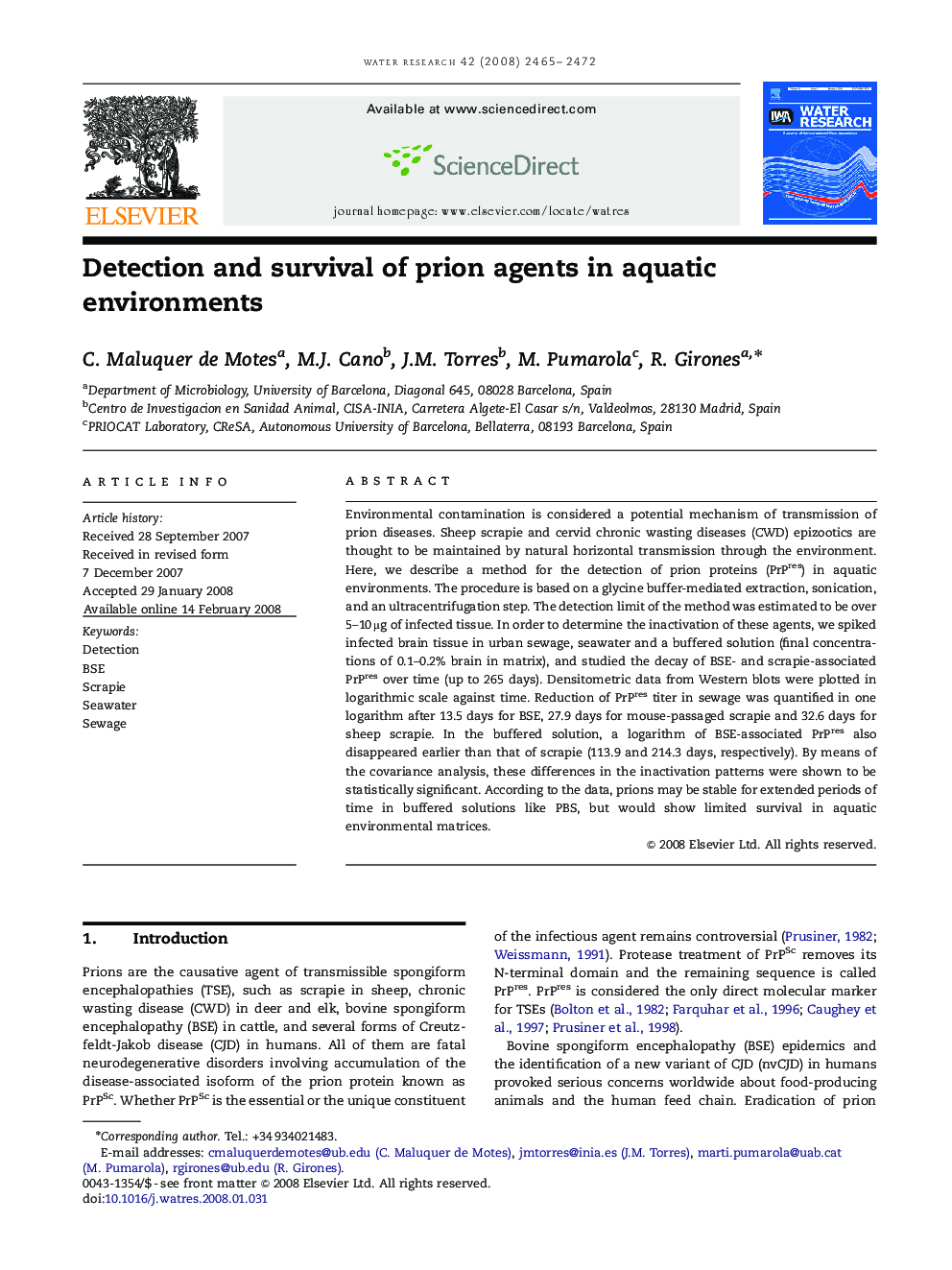| Article ID | Journal | Published Year | Pages | File Type |
|---|---|---|---|---|
| 4484757 | Water Research | 2008 | 8 Pages |
Environmental contamination is considered a potential mechanism of transmission of prion diseases. Sheep scrapie and cervid chronic wasting diseases (CWD) epizootics are thought to be maintained by natural horizontal transmission through the environment. Here, we describe a method for the detection of prion proteins (PrPres) in aquatic environments. The procedure is based on a glycine buffer-mediated extraction, sonication, and an ultracentrifugation step. The detection limit of the method was estimated to be over 5–10 μg of infected tissue. In order to determine the inactivation of these agents, we spiked infected brain tissue in urban sewage, seawater and a buffered solution (final concentrations of 0.1–0.2% brain in matrix), and studied the decay of BSE- and scrapie-associated PrPres over time (up to 265 days). Densitometric data from Western blots were plotted in logarithmic scale against time. Reduction of PrPres titer in sewage was quantified in one logarithm after 13.5 days for BSE, 27.9 days for mouse-passaged scrapie and 32.6 days for sheep scrapie. In the buffered solution, a logarithm of BSE-associated PrPres also disappeared earlier than that of scrapie (113.9 and 214.3 days, respectively). By means of the covariance analysis, these differences in the inactivation patterns were shown to be statistically significant. According to the data, prions may be stable for extended periods of time in buffered solutions like PBS, but would show limited survival in aquatic environmental matrices.
